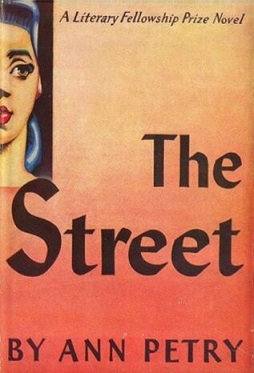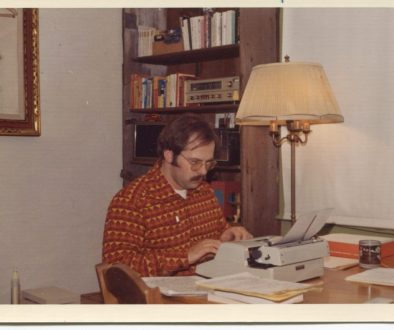The Saturday Review: The Street by Ann Petry

I’ve just finished reading Ann Petry’s 1946 novel, The Street. I was inspired to do so after reading Petry’s reprinted obit (1908-1997) in The New York Times. She was the first black woman novelist to publish a book—her very first—that sold over a million copies. In reading it, I was struck by the unfortunate truth that not much has changed in race relations in our country. While a college student in the 1960s, I first became aware of how disdainfully the white race looks upon blacks from reading Black Like Me by John Howard Griffin, the story of a white man who colors his skin so he may learn what it’s like to be a black man. A few years later, I saw the blatant racism of the South myself in a Mississippi bus station where bathrooms and benches and water fountains bore WHITES ONLY signs.
Bruce Hornsby may have summed it up best in his song, “The Way It Is.”
If one scratches the fragile surface of contemporary life, it becomes apparent that the white American community’s views and attitudes toward black people remain deeply, profoundly biased. Not much has truly changed since 1946, or probably since 1900, or even since the Emancipation Proclamation. For proof, one need only consider that 210 unarmed black men were shot dead by white police across the country in 2018 alone.
Petry’s novel makes clear that people of color are treated as if there is a fundamental difference between them and other races. This is exemplified in the scenes where the central character, Lutie Johnson, works for a wealthy white couple as their housemaid. Yet through her portrayal of Lutie and her eight-year-old son Bub, we come to realize this is not true. Standing with the woman in the market, Lutie realizes the only real difference between them is wealth—or the lack thereof.
What emerges in this gripping, disturbing, enlightening, soul-of-a-black-woman-novel is that people of color are, really and truly, not fundamentally different than any other race. They have the same feelings, thoughts, hopes and dreams, yet are all too often blocked by white bigotry. That bigotry is pervasive; it’s in the white’s DNA, but has accreted into the black’s as deep resentment. It’s the way it is.
The thing I find most interesting about this very authentic-feeling novel is that it isn’t just whites who discriminate against, in this case, black women. The black males portrayed are corrupt or getting corrupted, turning criminal, sexual predators. Black men who, often because they’re unable to find work, desert their wives and children in a New York minute. Black women are portrayed as sluts or whores, and children as criminals-in-training. Nearly everyone in this Harlem is hardscrabble poor, taken savage advantage of by men—white men, men of color, and white society.
No, Ann Petry’s The Street is not a feel-good book. It’s a potent evocation of mid-20th-century Harlem, which apparently lost much of the social and intellectual energy that had propelled the Harlem Renaissance of the previous decades. Or did it? Perhaps Petry’s story just takes place on a different street.




